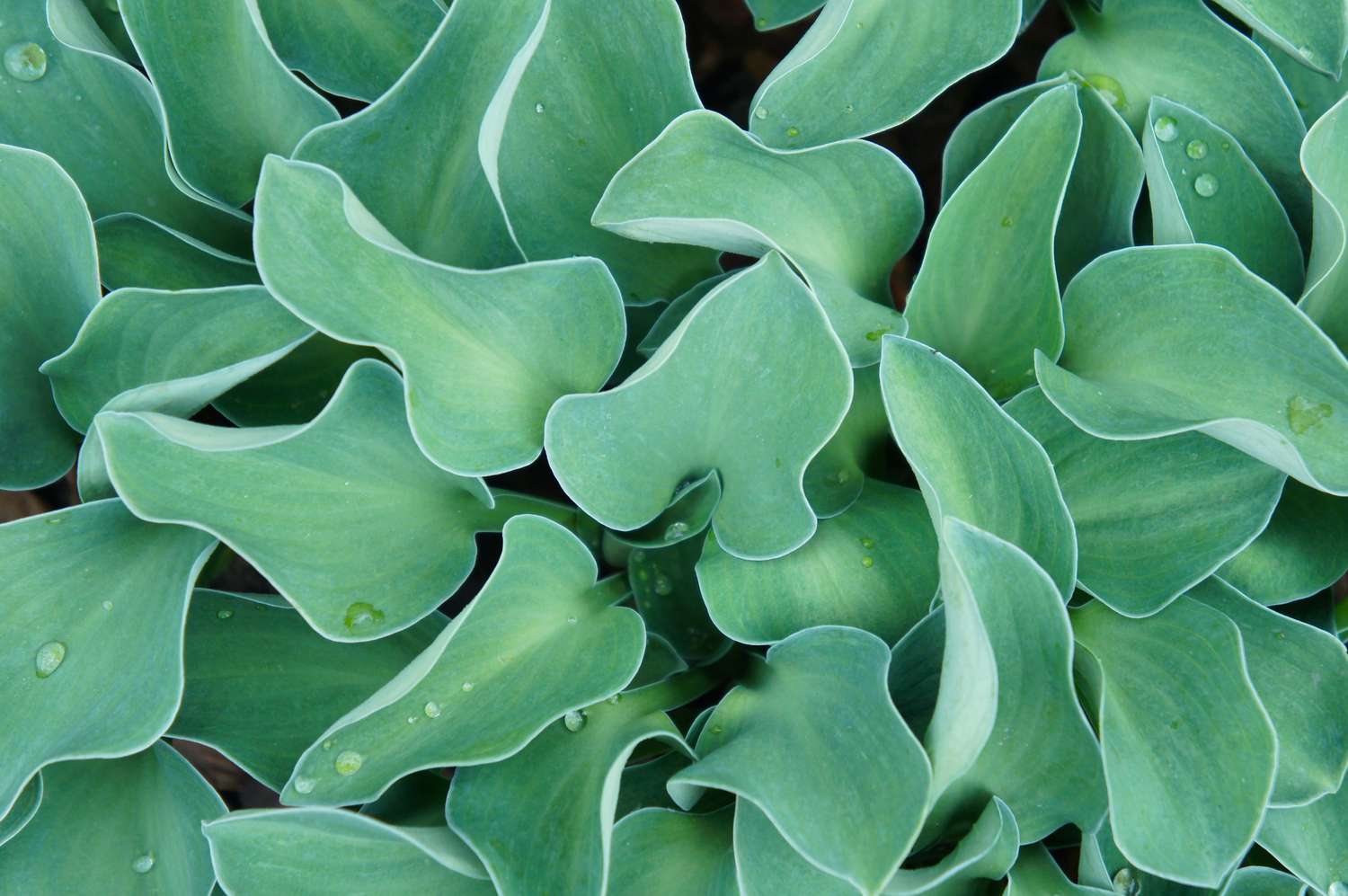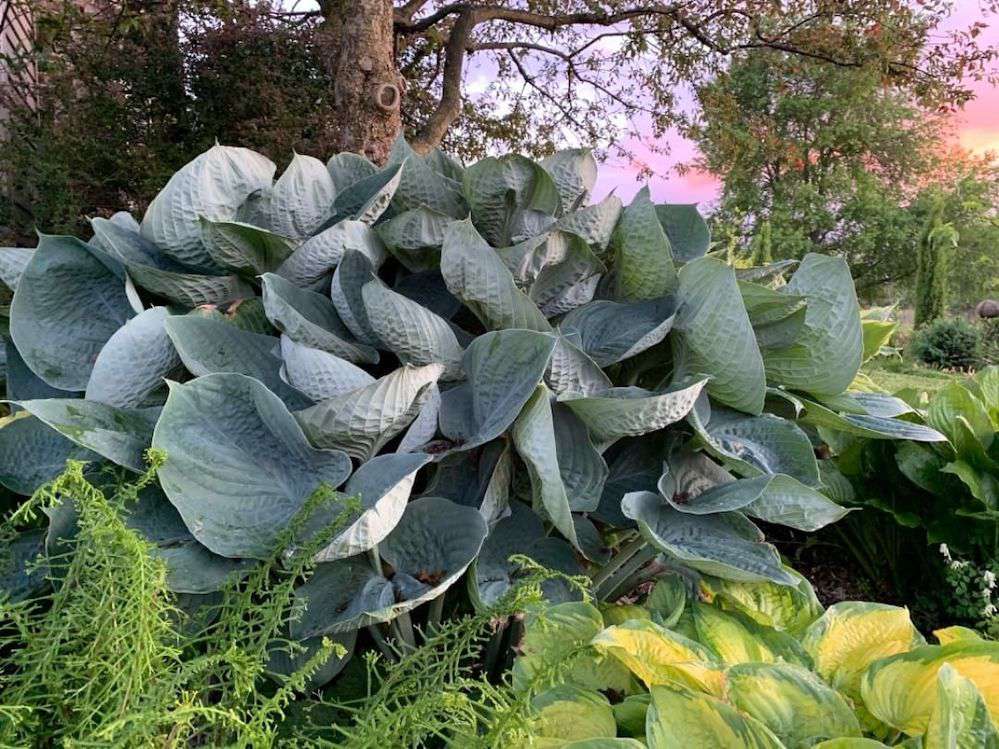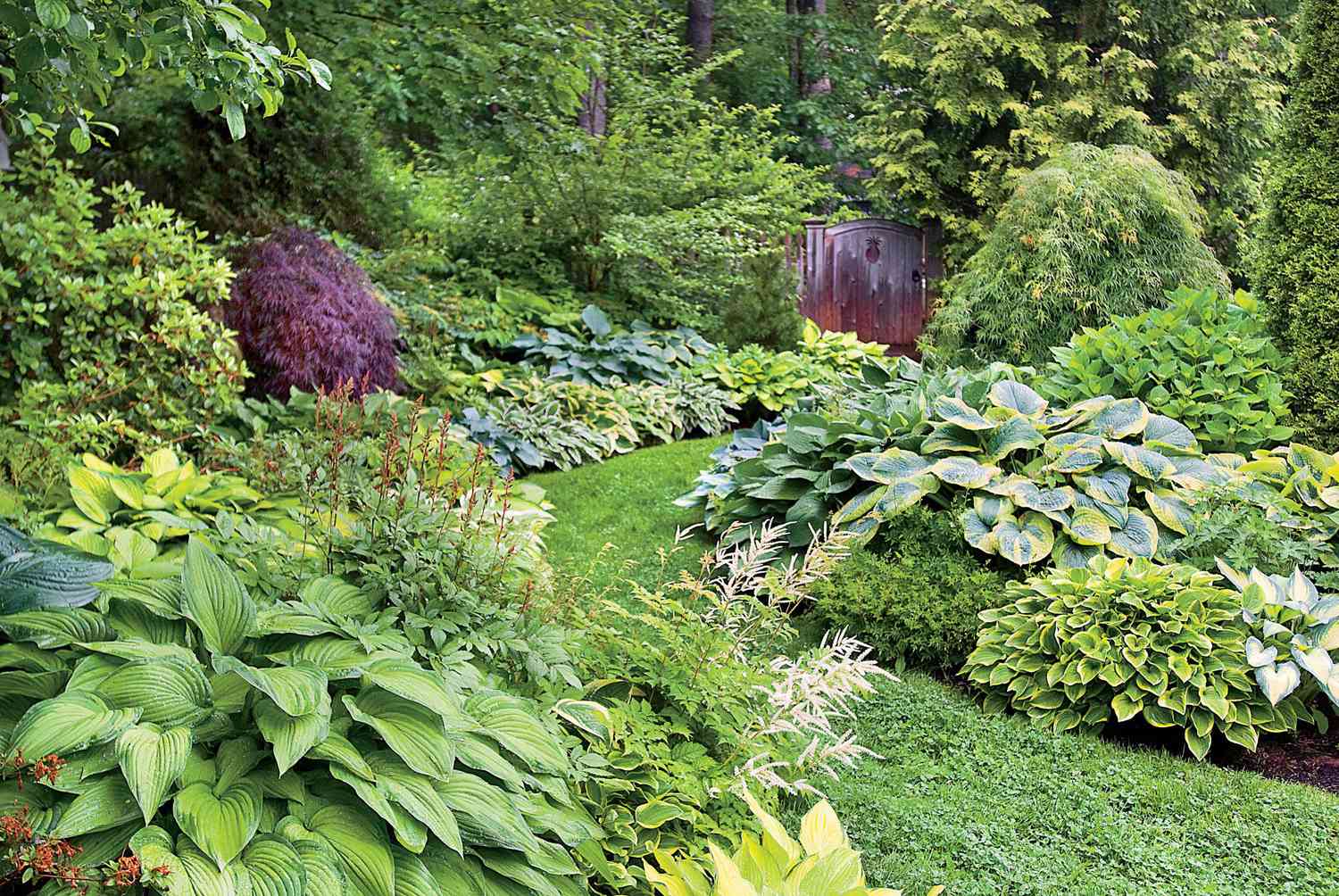It’s easy to understand how so many people can fall in love with the hosta plant. Not only do they provide lush foliage in gardens, but they are also easy to care for. This makes them a preferred, low-maintenance plant for beginners and more seasoned gardeners.
The genus belongs to the family Asparagaceae, a subfamily of Agavoideae. Native to East Asia, there may be as many as 22 species of hostas. These species of hosta and their selections interbreed so readily that myriad forms abound in a mind-boggling array of sizes and shapes.
Rounded, heart-shaped, lance-shaped, or oval leaves can be blue, green, chartreuse, or golden with stripes of yellow, cream, or white running down the centers or hugging the edges. Plus, many selections sport showy blue, purple, lavender, or white blossoms that may be highly fragrant.
You can nearly always find hostas in your local independent garden center or big-box store, and you should be able to look for the selections I recommend in this article right in your community. You can easily scarf up some nice, quart-size plants at reasonable prices. Even though hostas are considered easy-to-grow plants, it will be imperative to learn about the specifics of caring for them to reach their full potential as a feature of your garden.
| Plant Attributes | |
|---|---|
| Common Name | Hosta, Plantain Lily |
| Botanical Name | Hosta |
| Family | Asparagaceae |
| Plant Type | Herbaceous perennial |
| Mature Size | 4 inches to 32 inches tall, 6 inches to 3 ft. wide |
| Sun Exposure | Part shade to full shade |
| Soil Type | Evenly moist, organically rich, well-drained soil |
| Soil pH | 6.0 – 8.0 |
| Bloom Time | Summer |
| Flower Color | Violet, white |
| Hardiness Zones | 3 to 9 |
| Native Area | Asia |
Hosta Care
Hostas thrive from Canada to the Gulf Coast (USDA Zones 3 through 9). The plants enjoy a good, cold winter. They grow bigger from Zone 7 north, but you can plant sun-tolerant hostas like «Royal Standard» as far south as Northern Florida. Long-lived and widely cultivated, they are winter hardy so you can enjoy their blooms for longer.
Light
Hostas, also known as plantain lilies or gibōshi, are simply great perennials for temperate shade.

Temperature And Humidity
Spring is the best time to plant hostas, but summer is okay if you water regularly. Those with bluish foliage require shade. Those with yellowish leaves can take some sun.
Soil
Good soil is key. Plant hostas in moist, fertile, well-draining soil that contains plenty of organic matter and isn’t choked by any competing roots from nearby trees and shrubs.
Fertilizer
Fertilize them in the spring (just after new growth begins) using an organic product such as Espoma Plant-tone. Feed them again in the summer.

Types Of Hostas
- June: Golden leaves with blue-green edges; 12 inches tall, 24 to 30 inches wide.
- Stained Glass: Shiny gold leaves with dark green margins; 18 inches high, three to four feet wide.
- Guacamole: Deeply veined, apple green leaves with blue-green edges; one to two feet tall, two to four feet wide.
- Grand Tiara: Compact clumps of small, deep green leaves with bright yellow edges; 12 to 16 inches high, 24 to 30 inches wide.
- First Frost: Blue-green leaves with creamy edges; 16 inches tall, two to three feet wide.
- Drinking Gourd: Unique waxy, blue, quilted leaves shaped like cups; 18 to 24 inches high, two to three feet wide.
- Blue Mouse Ears: Miniature plant with leaves that resemble its name; eight to 12 inches tall and wide.
- August Moon: Large, bright yellow, heart-shaped leaves; grows one to three feet tall and wide.

Propagating
New, prizewinning hosta selections from mail-order specialists can be pricey but don’t sweat it. Within a couple of years, individual plants form nice-size clumps that you can divide into four or five plants, providing you with some freebies. Do this in the spring when plants send up clusters of spiky shoots. Lift the entire clump from the ground, and wash the soil from the roots.
Use a sharp knife or spade to cut completely between the shoots, leaving you with individual shoots with roots attached. Replant them all, and water them. Or wait until fall when the leaves have withered but are still visible. Lift and wash the clumps as before, cut between the dry leaves, separate the clumps into pieces, and replant.

Companion Plants
Though a hosta plant can be beautiful by itself, it’s even more stunning when accompanied by other plants that prefer similar growing conditions. Combine coarse, big-leaved hostas with perennials that offer narrow, long, or finely cut foliage, such as astilbes, ferns, wild columbines, and toad lilies.
To create color echoes in your garden, marry hostas with other plants that display yellow, chartreuse, or cream in their leaves—like variegated Solomon’s seal, golden Japanese forest grass, «Ogon» sweet flag, «Evergold» and «Everillo» Japanese sedge, and «Mrs. Moon» lungwort. Some of hosta’s other best buds include heucheras, hellebores, wild ginger, and lily-of-the-valley.
Common Pests
Let’s start with deer. Hosta leaves make a tasty salad for does. They will eat to the ground all that they can find. Regularly applying deer repellent is the only defense. The other arch-foe is a mouselike critter called a vole. Voles munch through hosta stems at or just below the soil line, leaving wilted, dying leaves in their wake.
Chemical vole repellent results aren’t always reliable. Because voles like to hide under mulch and leaves to avoid predators while they feast, pull away all of the mulch, leaves, and other debris from around your hosta plants. Then pray.
Was this page helpful?
Thanks for your feedback!
Tell us why!